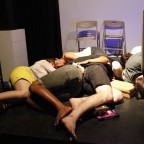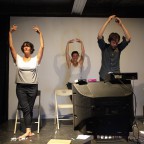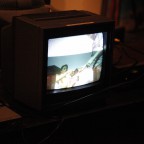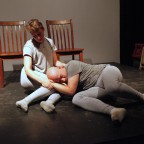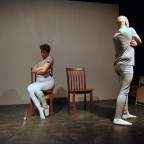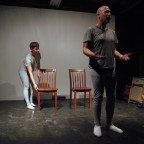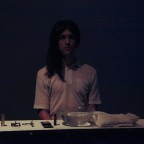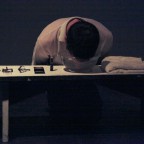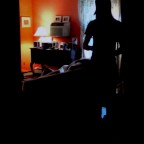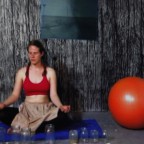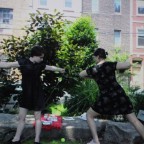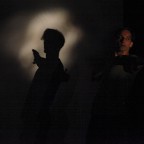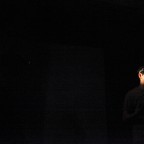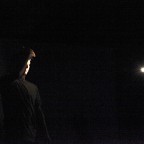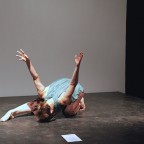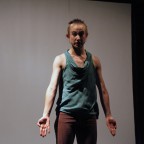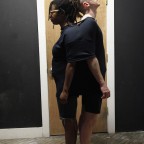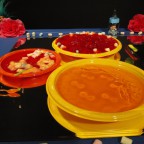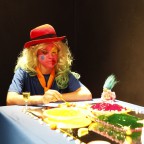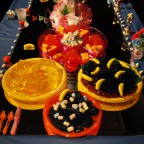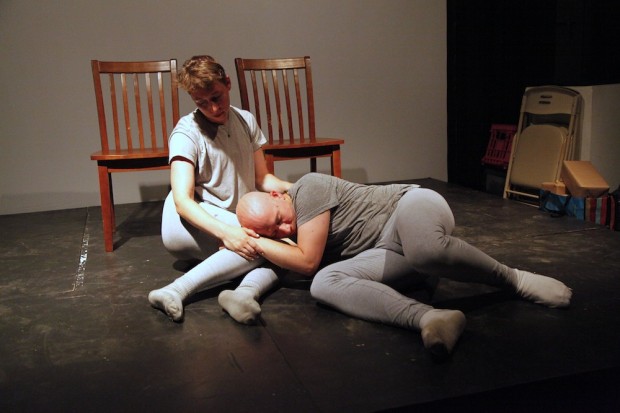
Blind Date is an exhibition to showcase cross-disciplinary collaboration. Organizers Jared Dyer and Dorothy Dubrule selected and matched 28 artists from an open call to create 14 “couples.”
Visual, performance, and literary artists have been paired on the basis of submission materials: an artist statement, a work sample and responses to a Love Connection-style questionnaire.
Couples will develop a “working relationship” over the course of 5 weeks and a piece for exhibition. Artists are encouraged to consider their final work as a compromise between their respective practices, and the collaborative process as “dating.” Couples will be asked to record their progress weekly- via text, video, sound, &c -on The Blind Date Blog that will serve as an extended artist statement for the work and as the exhibition catalogue. The interpretation of what constitutes a final work rests with the artists and is, in part, a component of the exhibition as a whole.
Blind Date will be exhibited at the Vox Populi Aux Space on June 27th,
and Goldilocks Gallery on June 28th – July 7.
————-
Couples:
Mark McCloughan and Mary Hill
Joy Mariama Smith and Ross Brubek
Jacelyn Biondo, Laris Kreslins and Kristen Shahverdian
Phoebe Bachman and Rebecca Savedow
Zach Rawe and Michael Vincent Pusey
Eleanor Goudie-Averill and David Haub
Katelyn Bobek and Sasha Parker
Alejandro Morales and Kate Speidel
Emilia Brintnall and Cory Kram
David Konyk and David Kyu
Spencer Silverthorne and Kate Parry
Mariana Templin and Mira Treatman
Gabriel Slavitt and Rob Emanuele
Meredith Sellers and Yasmin Roberti
————-
Program notes:
Eleanor Goudie-Averill and David Haub – #1/#2
The tale of the hungry and the less hungry: it is like you have something I want. Only I cannot say what it is, only what it may be if it was left like bread to rise. After we may be speaking, I, out loud, you with less measure or poise. But still saying a similar thing. I understood because I have had it before, and it made me.
From a brocade bag my sister withdraws the Atma the Om, and beside them places a pair of turquoise rings, A thin pencil, shaved to the quick, rubbed and re-rubbed. Plaque stained on her lips and a finger is dipped and dipped into a pot of coal. Seeing these things in her mirror makes them look twice as many: a lucid eye, green, a terrible quaking of the lashes and almost a chanting from the high high Himalayas that says to her with a voice full of cotton balls and pink plastic razor blades:
Do not be slow in deception!
Quick with the lick, a garnished smile. Silly pantomime boy, be guaranteed late but fast with going. She will almost look especially into one eye, as if to say gotcha! Now run silver lips. Like a spot of grease out of the pan, two freckles are condemned with a limpid tone. Powder pressed and sealed close, a door opened only at night, a cold flower blooms then, still as a cicada humming. This is said for a long time each day. A costly bird becoming, as if it were always a shade darker than the fence, a roiling crab. Green is pouring in now, from an unshaded avenue off Girard, and the clasps clack.
— David Haub
————-
David Konyk and David Kyu – Search Light
If your attention was visible, not just to yourself, but to the whole theater, does your behavior change? How are you self-aware? Is your focus more focused?
DK1 & DK2 (David Konyk & Dave Kyu) create a new performative context that openly explores the interface between audience and performer, the amateur v. the professional, presence v. absence, light v. dark. We hope this will be the first in a series of explorations.
————-
Katelyn Bobek and Sasha Parker – Drawn to Scale
Drawn to Scale, at base, starts with politeness. Having met so recently, or at least we agree it feels that way, our collaboration has been navigated in a mannerly way with hesitance to let in the other person. Negotiating this, we decided to work with basic surface assumptions involving scale and body language. We are attempting to see an ordinary place and situation from as many angles as possible, using string to draw these angles into shapes and games. We agree that the comfort zone of sharing, and building trust with time, should be challenged by the Blind Dating project, but also respected by focusing on sincerity of movement and context. The ball of string came from another piece made during the Blind Dating month as part of boxes made for one another, which are on display at Goldilocks Gallery until July 9.
————-
Mark McCloughan and Mary Hill – What We Talk About When We Talk About Love
Mary’s Face.
1. Wash face.
2. Concealer on blemishes, under eyes, tip of nose.
3. Blush.
4. Curl eyelashes.
5. Eyeshadow beneath eyebrows, at tops of cheeks.
6. Ambition.
7. Eyeliner on outer corner of eyes.
8. Eyeshadow on inner corner of eyes.
————-
Alejandro Morales and Kate Speidel – Holding Pattern &c
Using human contact as a means of communicating intimacy either real or imagined, the bulk of our Blind Date collaboration stems from an afternoon spent in a mostly empty room experimenting with and photographing various uses of body language and touch. The photographs and poses were then used to choreograph a dance piece that transforms that afternoon’s exercise into a shared language that is both personal and performative. Holding Pattern &c. may not necessarily represent a synthesis between disparate artistic disciplines, but through the ritualization of a specific set of movements, a closeness that began as staged and artificial evolved into a bond of real affection between two perfect strangers.
————-
Jacelyn Biondo, Laris Kreslins, and Kristen Shahverdian – HOW
If a person doesn’t know what peanut butter is and doesn’t know what a sandwich is, how does one instruct her/him on how to make it?
The third grade exercise of writing detailed instructions on “how to make a peanut butter sandwich” and the following of those instructions, set off the line of inquiry for this project. How do we give instructions and how do we receive them? How do two people interpret the same set of directions? How is it possible that siblings will have experienced the same exact event from childhood, yet they remember them so differently? How does each member of an audience perceive the same performance? We are always making choices-and always following instructions; so, if given the same set of instructions, how do we interpret them and add to them?What do we choose to follow and what do we ignore? How do we do all that with the cameras on us, with people watching?




